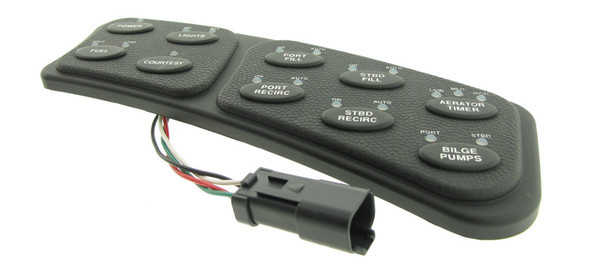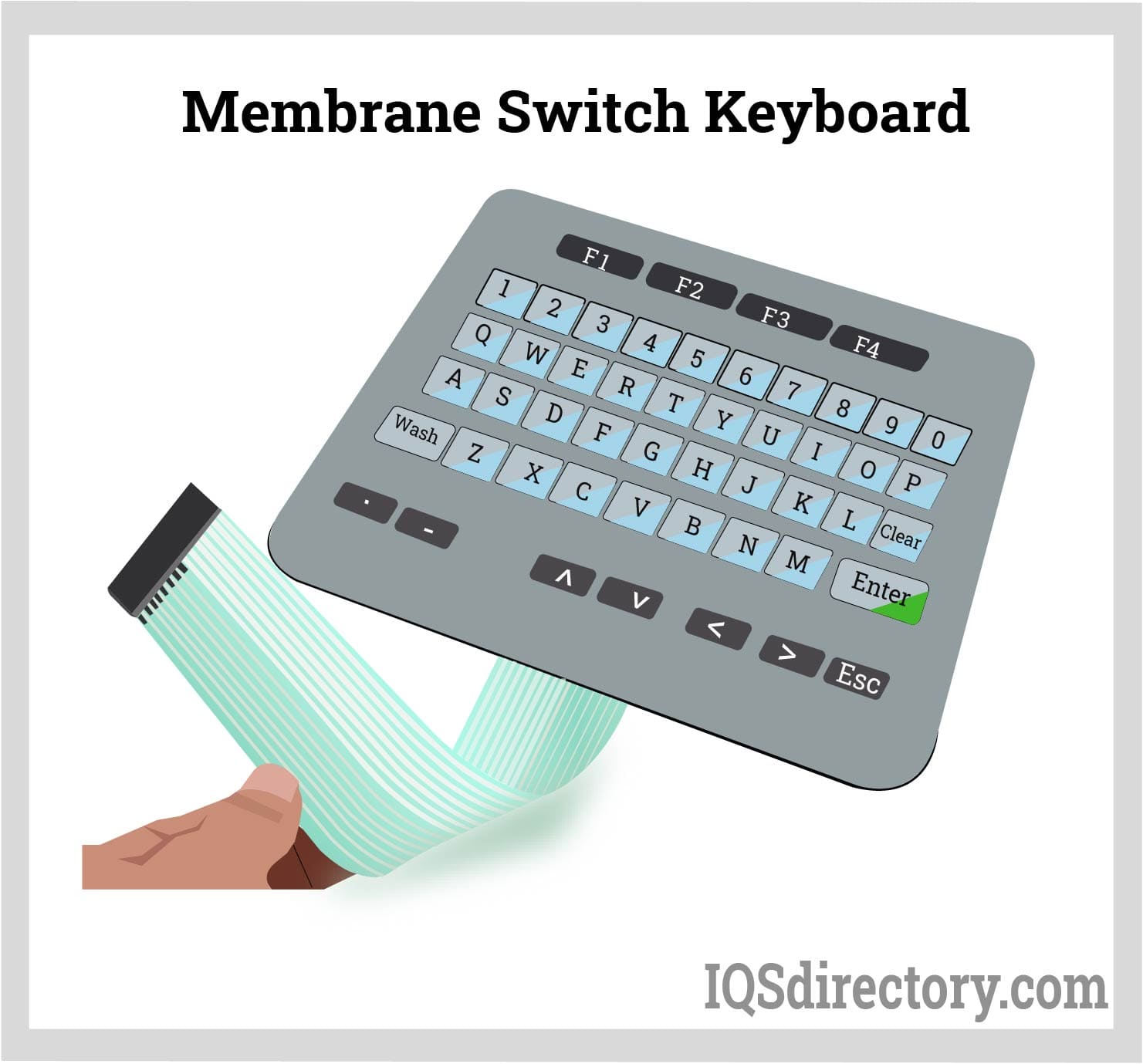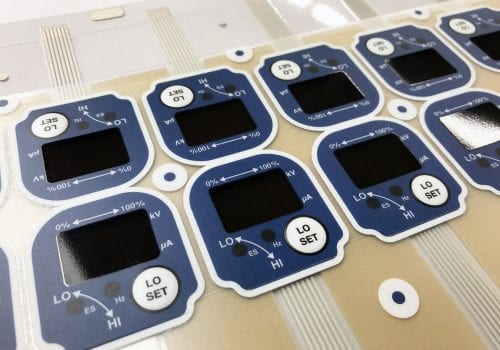How membrane switch enables sustainability in electronic product design
Wiki Article
The Production Process Behind Membrane Layer Change: What You Need to Know
The production process behind membrane layer switches combines mindful style, material option, and quality control. It starts with understanding the ins and outs of membrane layer switch design and advances through different stages, including product options and printing strategies. Each phase plays a vital role in ensuring performance and sturdiness. The complexities of layer building and construction and the rigorous screening standards may disclose understandings that are not right away noticeable. What lies beyond these fundamental elements?Comprehending Membrane Layer Switch Over Design
Although membrane buttons might appear straightforward at very first look, their design involves complex factors to consider that guarantee capability and durability. The design process starts with a detailed understanding of user demands, consisting of the user interface's intended application and ecological elements. Comfort designs is a crucial element, as the design should help with ease of usage while making certain that tactile comments satisfies customer expectations.Moreover, the layering of parts, such as graphic overlays, adhesive layers, and conductive traces, must be specifically crafted. membrane switch. This split arrangement not just influences the switch's responsiveness but additionally influences its durability. Interest is offered to the sealing strategies utilized to secure against moisture and dirt, which can endanger efficiency. In addition, layout factors to consider encompass aesthetic appeals, where color pattern and visual quality improve user experience. Ultimately, the layout of membrane switches equilibriums capability, individual experience, and sturdiness, guaranteeing that they meet the needs of different applications effectivelyProducts Made Use Of in Membrane Switch Over Manufacturing
When selecting products for membrane button manufacturing, it is important to contemplate both efficiency and resilience. The key materials consist of polyester and polycarbonate films, which give versatility and strength. These movies are typically covered with sticky to assure appropriate bonding to substratums. Conductive inks, generally made up of silver or carbon, are essential for producing electric connections within the switch, permitting for reputable operation.Additionally, a safety layer, such as a hard layer, is often related to enhance scrape resistance and long life. The choice of backing product, such as acrylic or foam, can substantially impact the switch's tactile feel and general individual experience. Furthermore, various environmental aspects, consisting of temperature and moisture, should assist material option to ensure peak performance in specific applications. Inevitably, the appropriate combination of products contributes to the membrane button's capability and lifespan, making notified choices important for manufacturers.The Printing Refine: Creating Graphics and Text
The printing procedure in membrane layer button manufacturing plays a significant duty in generating high-quality graphics and text. Numerous graphic design techniques are employed to guarantee visual appeal and functionality, while careful ink selection approaches are crucial for durability and performance. Understanding these components is basic for attaining best lead to membrane switch layout.Graphic Style Techniques
Graphic style techniques play a crucial role in the printing procedure of membrane layer switches, as they specify exactly how graphics and text will inevitably show up on the final product. Reliable graphic design entails the tactical use layouts, typefaces, and colors to boost readability and visual allure. Designers usually use vector graphics for scalability, making certain that pictures continue to be sharp at different dimensions. Additionally, focus to contrast and positioning is vital, as it affects individual interaction and aesthetic quality. The incorporation of branding aspects, such as logo designs, must be managed with treatment to keep brand integrity. Generally, thoughtful graphic style strategies contribute substantially to the functionality and appearance of membrane layer switches, affecting customer experience and product performance.Ink Choice Approaches
Selecting the suitable ink is crucial for achieving the preferred aesthetic top quality and durability in membrane layer switch production. Different ink types are made use of, consisting of solvent-based, water-based, and UV-curable inks. Each kind offers distinct attributes, such as adhesion, versatility, and resistance to environmental aspects. Solvent-based inks are usually preferred for their durability and vibrant colors, while water-based inks are much more ecologically pleasant yet might have constraints in bond. UV-curable inks supply fast treating and robust performance. Additionally, shade matching strategies ensure that the chosen inks line up with style specifications. Ultimately, the choice of ink must take into consideration elements such as application method, substrate compatibility, and end-use needs to attain remarkable lead to membrane switch graphics and message.Layer Building and Setting Up

Material Option Refine
A mindful option of materials is important in the manufacturing process of membrane layer buttons, as it straight affects functionality and resilience. The main materials used consist of polyester, polycarbonate, and various conductive inks. Polyester is typically favored for its superb resistance to chemicals and abrasion, making it suitable for severe environments. Polycarbonate, on the various other hand, provides exceptional quality and impact resistance, which is valuable for applications calling for visibility and effectiveness. Conductive inks, typically composed of silver or carbon, are vital for producing reliable electric paths. Furthermore, the option of sticky materials influences the total honesty of the button - membrane switch. Reviewing variables such as ecological exposure, tactile responses, and visual demands guides manufacturers in picking the very best materials for their particular applicationsLayer Adhesion Strategies
Sticking layers in membrane button building and construction is a crucial process that assures performance and durability. Various attachment methods are employed to safeguard optimal bonding between layers, which commonly include the use of adhesives, warmth, and pressure. Pressure-sensitive adhesives (PSAs) are commonly weblink made use of for their ease of application and prompt bonding abilities. Additionally, thermal bonding methods can be applied, where warmth is made use of to activate glue buildings, protecting a solid bond. The option of attachment method greatly depends upon the products involved and the details application needs of the membrane switch. Correct alignment and consistent application of adhesives are necessary to protect against problems, safeguarding the description switch runs efficiently throughout its desired lifespan.Quality Assurance Actions
Guaranteeing high quality control throughout the layer construction and assembly of membrane layer switches is crucial for maintaining efficiency and integrity. This procedure usually entails numerous crucial procedures, consisting of complete evaluations at each stage of manufacturing. Suppliers utilize sophisticated screening approaches, such as peel examinations and adhesion assessments, to confirm the stability of layer bonds. Furthermore, aesthetic examinations are performed to identify any problems in printing or product variances. Ecological problems, such as temperature level and moisture, are meticulously checked to assure ideal curing and adhesion. Furthermore, regular calibration of equipment helps maintain precise production criteria. By executing these quality assurance measures, manufacturers can greatly lower the threat of item failing, ensuring that the final membrane switches over satisfy the needed specs and client expectations.Testing and Quality Assurance Actions

Developments in Membrane Switch Technology
As advancements in modern technology proceed to develop, membrane buttons are benefiting from cutting-edge advancements that enhance their performance and user experience. One remarkable advancement is the integration of capacitive touch modern technology, which enables for more receptive and intuitive interface. This shift not just enhances appearances however also lowers mechanical deterioration, expanding the life expectancy of the switches.Additionally, innovations in graphic overlay products have caused improved resilience and resistance to ecological elements such as dampness and UV light. These materials now supply enhanced clearness and illumination, further raising the aesthetic appeal.Furthermore, the incorporation of smart innovation is changing membrane changes right into interactive control board, enabling connectivity with IoT tools. This connection fosters a seamless customer experience, leading the way for applications in numerous industries, from health care to customer electronic devices. Jointly, these developments setting membrane layer switches over as critical elements in contemporary device design.Frequently Asked Questions
For how long Does the Membrane Switch Over Manufacturing Process Take?
The period of the membrane button production procedure can differ significantly. Elements such as complexity, products utilized, and manufacturing quantity influence timelines, with common manufacturing ranging from a couple of days to numerous weeks for conclusion.What Are the Typical Applications for Membrane Switches?
Membrane layer buttons are typically made use of in various industries, consisting of automotive controls, family appliances, medical gadgets, and customer electronic devices (membrane switch). Their adaptability and resilience make them excellent for applications needing straightforward interfaces and reliable efficiency in diverse settingsCan Membrane Layer Switches Over Be Customized for Particular Demands?

What Is the Life expectancy of a Regular Membrane Change?
The lifespan of a regular membrane button differs, however typically, it varies from 1 to 5 million cycles. Elements such as use, setting, and worldly quality substantially affect longevity and overall efficiency with time.

Are Membrane Layer Switches Eco-friendly?
The environmental friendliness of membrane layer switches varies. Some products used might not be recyclable, while others can be eco-friendly. The overall impact depends upon making products and techniques, demanding careful consideration during selection and disposal. The production procedure behind membrane switches combines cautious style, material option, and top quality control. It starts with recognizing the ins and outs of membrane switch layout and advances through different stages, consisting of material options and printing strategies. When selecting materials for membrane button production, it is important to contemplate both performance and sturdiness. A cautious choice of products is necessary in the production process of membrane buttons, as it straight influences capability and durability. The selection of attachment approach largely depends on the materials included and the certain application requirements of the membrane layer switch.Report this wiki page